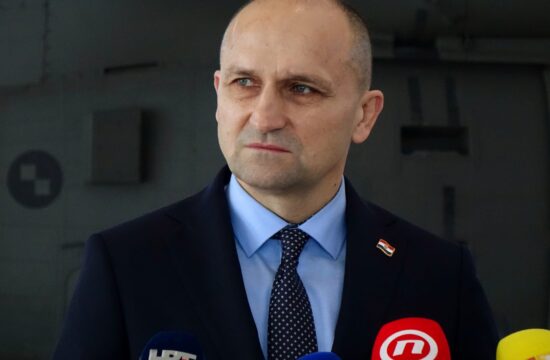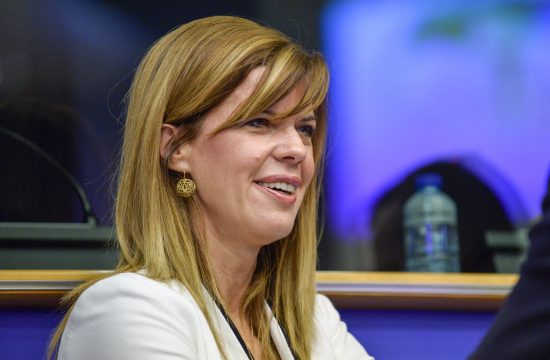After five years of economic recovery following the crisis which had lasted from roughly 2008 to 2014, Croatia's GDP in 2019 finally returned to its pre-crisis level. However, in ten years from 2008 to 2018 Croatia has made little progress in catching up to EU's average level of economic growth, European Commission said in a report published on Wednesday.
As part of its European Semester Winter forecasts, the Brussels-based European Commission published reports on the overall economic progress in each EU member country, and also analysed the state of macroeconomic affairs in countries which have beel labelled to have “macroeconomic imbalances” or “excessive macroeconomic imbalances.”
For Croatia, European Commission noted that a stable economic growth over the last five years, combined with a careful fiscal stabilisation policy has made it possible for the country to gradually reduce its high levels of public, private, and foreign debt, which in turn has reduced the overall vulnerability of its economy.
The unemployment rate has continued to fall, thereby raising households’ disposable incomes. However, in 2018, Croatia’s GDP per capita compared to the EU average was still at the same level as ten years earlier.
GDP per capita, measured in terms of purchasing power parity, was 63 percent of the European average in 2018, unchanged from 2008, the last year before the crisis his the country in earnest.
Croatia also increasingly lags behind similar post-communist EU member countries in Central and Eastern Europe. Despite stable growth, the country’s relatively low growth potential going forward will continue to be an obstacle to catching up with other EU countries, the European Commission said.
Participation in the labour market remains low, as well as labour productivity, and the business environment and the public administration were deemed “insufficiently supportive” of faster economic convergence with the rest of the bloc.
“Addressing structural weaknesses with lasting effect would enable Croatia to converge faster to the rest of the EU,” the European Commission said.
Reforms implemented at ‘uneven pace’ across various areas
Croatia has made limited progress in addressing the 2019 country-specific EC recommendations and, just as in 2019, it is demed as having macroeconomic imbalances, although these are no longer labelled “excessive”.
Implementation of the reform agenda has proceeded at an uneven pace in different policy areas, the European Commission said, and added that most progress has been made on fiscal policy and labour market. There has been some backtracking on pensions after elements of the reform designed to increase the statutory retirement age were suspended as demanded by trade unions.
Some progress was made in implementing curricular reform in the education system, in managing government agencies, active employment measures, sustainable transport, and in the judiciary, by expanding the scope of digital reform in courts, as well as some reduction in backlog cases.
As for the business environment, improvements were made by cutting some red tape.
Public finances improving, although growth potential still low
Public debt level still remains high, although it seems to be falling in recent years. Public finances have improved, and Croatia recorded its first ever fiscal surpluses in 2017 and 2018. Thanks in part to improvements in public debt management, debt is being refinanced at record low rates, with extended maturities.
The improvements in public finances were recognised by Fitch and S&P credit rating agencies, as they upgraded Croatia’s long-term sovereign credit rating to investment grade.
The consolidated corporate and household debt levels for the third quarter of 2019 are estimated at 58.4 percent and 34.3 percent of GDP respectively, some 24 and 8 percentage points below their peaks in 2010. As for the current account surplus, which peaked at 3.3 percent of GDP in 2017, it dropped to 1.9 percent of GDP in 2018, as the increase in imports turned the trade balance negative.
The current account surplus rebounded in the first three quarters of 2019 to 2.2 percent of GDP, largely due to growing tourist revenues.
However, low growth potential still remains an obstacle to Croatia catching up with the rest of the EU more rapidly. After reaching its lowest point in 2010, potential output growth has increased significantly, estimated at 2.1 percent in 2019. Although this is higher than the EU average, it is the lowest among similar EU countries.
The labour contribution to potential growth turned positive in 2019, due to a gradual recovery of employment, though it remains one of the lowest among peers. Demographic trends and a chronically low activity rate are a drag on labour contribution to growth in future years.
Potential growth is projected to remain the lowest among Croatia’s peers throughout the 2019-21 period.
Despite improvements in the labour market, increasing the labour contribution to potential growth will require raising the low activity rate, which will be difficult, notably because of the demographic challenges in the country.
Productivity growth is still limited due to poor allocation efficiency, complex business environment, and public sector inefficiency, the EC says. As for tax policy, the EC says that Croatia’s taxation system is strongly skewed towards indirect taxation, and puts Croatia among EU countries with lowest direct taxes revenue.
This is partly a consequence of very low property taxes, which are considered to be among the most growth-friendly taxes. The low share of direct taxation is also a reflection of successive cuts in the personal income tax implemented over the past four years.
Aimed at reducing the tax burden on labour, the cuts have resulted in more than half of persons in employment not being liable for any personal income tax.
Still, Croatia ranks around the EU average when it comes to revenue from social contributions in proportion to GDP, despite having the third lowest employment rate in the EU. At the same time, Croatia collects the highest share of VAT revenue in proportion to GDP of all EU countries.
Health care spending projected to increase
The revenue of the public health insurance fund HZZO is estimated to have increased by 11 percent year-on-year in 2019, but in spite of this, late payments to suppliers of medical goods and services are estimated to have grown by over 15 percent.
Furthermore, health care spending is expected to grow strongly in 2020 on the back of wage increases agreed in September 2019, and the Supreme Court ruling from December 2019 which upheld doctors’ claims on unpaid overtime.
Arrears are mostly generated in state-owned hospitals, particularly those owned by counties.
Faced with the prospect of suppliers suspending deliveries of drugs, the central government settles such arrears through ad hoc financial recovery programmes, and there has been 12 such emergency interventions since 2000, in amounts ranging from 0.1 to 0.6 percent of GDP in a given year, the European Commission said.
Fight against corruption still weak
With regard to the fight against corruption and organised crime, the European Commission said that control and sanction mechanisms are still weak. Although there is a considerable number of investigations and indictments in cases related to organised crime and corruption, the inefficiencies of the justice system, such as lengthy court proceedings, often impede closure.
Official statistics also show that a significant proportion of corruption cases happen at local government levels.
The law on local government, which gives elected local officials considerable discretion in decision-making without requiring those officials to formally declare their assets, or any other form of oversight, remains a concern.
The discretionary powers given to local officials to decide on how public assets would be used, as well as spendings worth up to 1 million kuna (€134,000), and the ability to appoint board members of public companies at whim, all create preconditions which may foster corruption.
Eco-friendly and renewable energy numbers still below EU average
In terms of environment, Croatia has a long way to go in its transition from a linear to a circular economy. Croatia still has no comprehensive strategy to move towards a circular economy, in which resources are used for as long as possible through recycling and waste reduction.
Despite some progress, shifting waste disposal systems from landfills towards modern recycling remains a priority.
In Croatia, 25 percent of municipal waste was sent to recycling in 2018 – a large improvement from 4 percent in 2010, but still substantially below the EU average of 47 percent. The proportion of waste that ends up in landfills still remains high at 66 percent, was above the EU average of 22 percent.
The EC also noted that air pollution has a significant impact on people’s health, that sewage systems are underdeveloped, and that the water supply networks face high rates of waste through leaks. As for greenhouse gas emissions, Croatia will have no problem meeting EU targets set for the period until 2020, but will need additional environment-friendly measures to meet the targets set for the next decade until 2030.
The share of renewable energy sources used in the country is 28 percent. However, it is very low in transports, merely 3.9 percent in 2018, one of the lowest rates in the EU, the European Commission said.
(€1 = 7.45 kuna)
Follow N1 via mobile apps for Android | iPhone/iPad | Windows| and social media on Twitter | Facebook.




